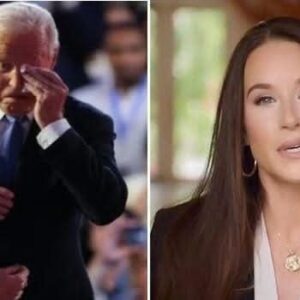Court documents unsealed this week have revealed a startling twist in the investigation into the assassination of conservative activist Charlie Kirk. An elderly man who initially confessed to pulling the trigger has now been accused of fabricating his role in the killing in order to help the alleged gunman evade justice. The revelations shed new light on the tangled web of false leads, misdirection, and confusion that complicated the high-profile case from the outset.
The man, whose name is being withheld due to ongoing legal proceedings, reportedly walked into a local police station days after the shooting and claimed responsibility for Kirk’s death. His confession briefly threw the investigation off track, raising hopes among authorities that the case had been resolved sooner than expected. However, inconsistencies in his account quickly raised red flags. Investigators noted that his description of the weapon, the shooting location, and even Kirk’s movements on the day of the attack did not match evidence already gathered.
According to prosecutors, the elderly man’s false confession was not simply a matter of confusion or attention-seeking. Newly unsealed documents indicate that he knew the suspected shooter, Tyler Robinson, and had been in contact with him before and after the assassination. Text messages and testimony suggest the man’s intention was to mislead law enforcement, creating enough doubt to give Robinson a chance to flee or mount a stronger defense. Prosecutors allege that by falsely admitting guilt, he hoped to divert suspicion away from the younger man, potentially buying him valuable time.
The revelation has outraged Kirk’s supporters, who see the false confession as a cruel act that delayed justice and deepened the pain for the victim’s family. Legal experts say the development underscores the challenges of investigating high-profile crimes where misinformation and misdirection can spread quickly. “False confessions are rare but incredibly damaging,” one analyst explained. “They waste resources, create confusion, and can undermine public confidence in the justice system.” Authorities have since charged the elderly man with obstruction of justice and making false statements to investigators.
The documents also describe how investigators ultimately unraveled the ruse. Surveillance footage, forensic evidence, and witness testimony all contradicted the man’s claims, while digital records tied Robinson directly to the scene of the crime. When confronted with these findings, the man reportedly admitted that he had not pulled the trigger but maintained that his actions were motivated by “loyalty” and a desire to shield Robinson. Prosecutors argue that this misguided attempt to interfere with the investigation nearly compromised the timely capture of the actual suspect.
As Robinson awaits trial for the murder of Charlie Kirk, the role of the false confessor adds yet another layer of complexity to an already fraught case. The revelation that someone would go so far as to claim responsibility for a killing they did not commit has sparked public debate about motives, accountability, and the lengths individuals will go to protect those they sympathize with. For Kirk’s grieving family and supporters, the episode is another painful reminder of how deception and dishonesty can distort justice. For investigators, it is a cautionary tale about the need for diligence in the face of false leads. And for the nation, it adds one more twist to a tragedy that has already left deep scars in the political and cultural landscape.




